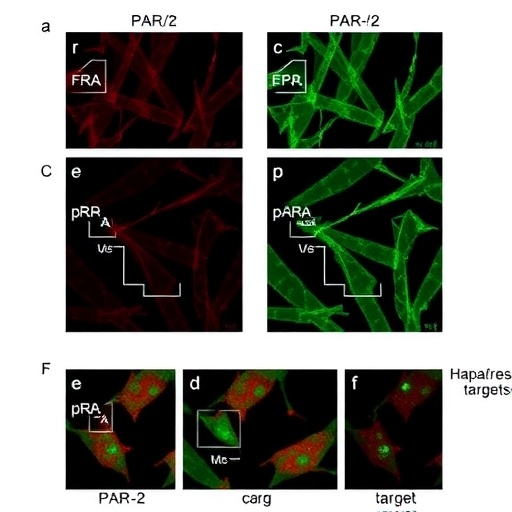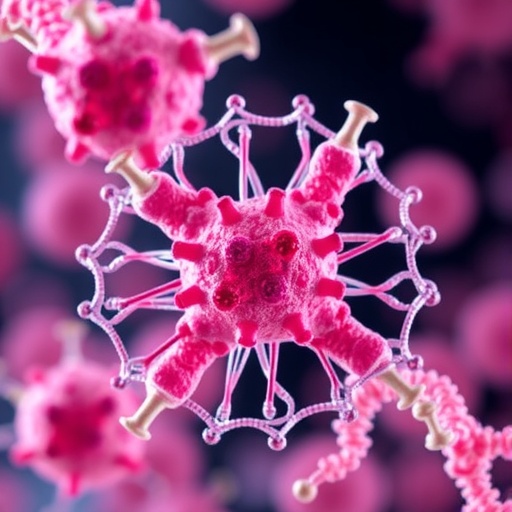
In a groundbreaking study published in BMC Nursing, researchers Hu, Ly. and colleagues delve into the transformative potential of high-fidelity human patient simulator manikins in conjunction with standardized patient simulation scenarios, particularly in the area of pediatric nursing education. This innovative research reflects a significant shift in how nursing education can enhance clinical thinking skills, which are crucial for aspiring nurses faced with real-world medical situations. The study examines the intricate integration of modern technology and standardized procedures to cultivate a deeper understanding of patient care among nursing students.
As the demand for competent nurses rises globally, so does the necessity for well-rounded educational methods that can adapt to the intricate nature of healthcare environments. The incorporation of high-fidelity manikins, which closely replicate human physiological responses, offers students a unique touchpoint for experiential learning. These manikins provide scenarios that are both realistic and challenging, pushing nursing students to engage critically with their decision-making processes. This study explores how such tools can bridge the gap between theoretical knowledge and practical application, thereby fostering more profound clinical reasoning skills.
The researchers employed a mixed-methods approach to their study, gathering quantitative and qualitative data from nursing students participating in simulated scenarios. The combination of high-fidelity simulations and standardized patient interactions was meticulously structured to assess improvements in both clinical thinking and overall nursing competencies. This approach allows for a comprehensive analysis of the variables influencing student performance, providing a robust framework for future nursing education models.
One of the primary highlights of the study is its emphasis on the simulation scenario’s design. By crafting scenarios that accurately reflect pediatric nursing challenges, students are not only able to practice clinical skills but are also encouraged to think critically under pressure. This is particularly important in pediatric care, where nurses often face time-sensitive decisions that can significantly impact patient outcomes. The study underscores the necessity of aligning simulation experiences with real-world clinical demands, ensuring that students are equipped with the skills needed for effective patient care.
In addition to the technical skills required in nursing, the research also identifies the importance of interpersonal communication and teamwork. High-fidelity simulations often require students to collaborate, fostering essential soft skills that are critical in nursing practice. The findings indicate that such collaborative learning environments significantly enhance student confidence and competence. This aspect of nursing education is vital as it prepares students for the realities of working in multidisciplinary teams in various healthcare settings.
Furthermore, the role of feedback in the learning process cannot be overstated. The study amplifies the necessity of immediate, constructive feedback during simulations, which allows students to reflect on their performance and identify areas for improvement. This iterative process of learning—experiencing, reflecting, and applying—creates a loop that solidifies knowledge and enhances skill acquisition. The researchers argue that faculty should be actively involved in guiding students through this reflective practice, ensuring that learning is both effective and meaningful.
As the study progresses, the implications extend beyond mere skills training. There is an evident correlation between students’ engagement in high-fidelity simulations and their eventual performance in clinical settings. The evidence suggests that those who undergo rigorous simulation training are not only more prepared but also exhibit higher levels of clinical judgment. This finding is pivotal, as it points toward a potential paradigm shift in nursing curricula towards incorporating more simulation-based practices.
Additionally, the research prompts an examination of the overall educational strategies employed in nursing programs. With technology rapidly evolving, nursing education must strive for innovation in teaching methods. The effectiveness of high-fidelity simulators and standardized patient scenarios could lead to more immersive learning experiences, redefining how clinical competencies are taught and measured. This evolution might also draw the attention of educational policymakers, paving the way for greater investment in simulation resources in nursing schools.
Moreover, the study paves the way for future research in nursing education. The authors highlight several areas requiring further investigation, including the long-term retention of skills learned through simulation and the adaptability of these methods in different nursing specialties. As healthcare continues to change, understanding how best to equip future nurses becomes an increasingly pressing concern.
In conclusion, Hu et al.’s research offers a comprehensive look at the evolving landscape of nursing education through the lens of simulation technology. The integration of high-fidelity human patient simulators with standardized patient scenarios redefines traditional pedagogies, aligning them more closely with the realities of clinical practice. This not only enhances clinical thinking but also prepares nursing students for the complexities they will face in their careers. As the debate over the effectiveness of nursing education continues, studies like this one illuminate a promising path forward—one that harnesses innovation to better prepare the next generation of healthcare professionals.
This innovative approach to education is not merely about improving pass rates or examination scores; it’s about nurturing a generation of caregivers who are well-equipped to handle the diverse and complex nature of patient care. The implications of such research extend far beyond the confines of the classroom; they reach into homes, hospitals, and communities, ultimately enhancing the quality of healthcare for all.
The study’s findings reinforce the notion that effective nursing education is integral to patient safety and quality care. By prioritizing clinical thinking through modern simulation techniques, nursing programs can fundamentally reshape the future of healthcare delivery. Prior such studies, the emphasis on theoretical knowledge alone often left gaps in practical application; this research steps decisively into those gaps, paving a way toward a more resilient and capable nursing workforce.
As this research gains traction within academic and clinical circles, it will undoubtedly influence educational policies and practices, ultimately benefiting patients by ensuring that their nurses are adept, confident, and ready to face the complexities of modern health issues head-on.
Subject of Research: The impact of high-fidelity human patient simulator manikins combined with standardized patient simulation scenarios on clinical thinking in pediatric nursing education.
Article Title: Effect of high-fidelity human patient simulator manikins combined with standardized patient simulation scenario on clinical thinking in pediatric nursing education.
Article References:
Hu, Ly., Li, Sq., Zhou, Zy. et al. Effect of high-fidelity human patient simulator manikins combined with standardized patient simulation scenario on clinical thinking in pediatric nursing education.
BMC Nurs 24, 1129 (2025). https://doi.org/10.1186/s12912-025-03562-3
Image Credits: AI Generated
DOI: 10.1186/s12912-025-03562-3
Keywords: Nursing education, high-fidelity simulation, clinical thinking, pediatric nursing, standardized patient scenarios.
Tags: bridging theory and practice in nursingclinical thinking skills in nursingenhancing nursing student competenciesexperiential learning in healthcarehigh-fidelity human patient simulatorsinnovative nursing education methodsmixed-methods research in nursing educationnursing students decision-making processespediatric nursing educationrealistic medical simulation scenariosstandardized patient simulationtransformative potential of nursing simulation tools




